Ditapis dengan
E-book Becoming Global Asia : Contemporary Genres of Postcolonial Capitalism …
In 2007, a Smithsonian Magazine article declared, “Singapore Swing: Peaceful and Prosperous, Southeast Asia’s Famously Uptight Nation Has Let Its Hair Down.” Remarking on his return trip to Singapore, David Lamb, former Southeast Asia bureau chief of the Los Angeles Times,marveled, “This tiny nation—whose ascendancy from malariainfested colonial …
- Edisi
- -
- ISBN/ISSN
- 9780520396678
- Deskripsi Fisik
- 230 hlm
- Judul Seri
- -
- No. Panggil
- 959.57 NAR b
The Romanovs
The Romanov family ruled Russia from 1613 to 1917. They ascended the throne at the end of one of the most critical periods of Russian history, known as the Time of Troubles (1589 Ü 1613). The last tsar of the previous dynasty, a weak son of Ivan the Terrible, died in 1589.
- Edisi
- -
- ISBN/ISSN
- -
- Deskripsi Fisik
- 148 halaman, ilus.
- Judul Seri
- -
- No. Panggil
- 947 GRA t
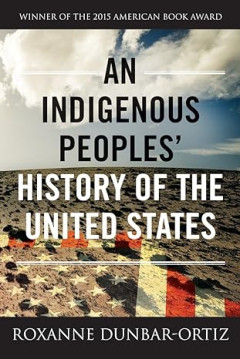
E-book An Indigenous Peoples' History of the United States
Today in the United States, there are more than five hundred federally recognized Indigenous nations comprising nearly three million people, descendants of the fifteen million Native people who once inhabited this land. The centuries-long genocidal program of the US settler-colonial regimen has largely been omitted from history. Now, for the first time, acclaimed historian and activist Roxanne …
- Edisi
- -
- ISBN/ISSN
- -
- Deskripsi Fisik
- 270 halaman, ilus.
- Judul Seri
- -
- No. Panggil
- 973 DUN a
E-book Moving Natures : Mobility and Environment in Canadian History
In perhaps the most striking passages of The Dominion in 1983, the author writing under the pseudonym Ralph Centennius predicted the use of “light and beautiful rocket cars, which [dart] through the air at the rate of sixty miles in one minute.” Constructed of polished metal, these fifty-seat rocket cars would fly through the sky at heights of up to fifteen hundred feet and land on rails wh…
- Edisi
- -
- ISBN/ISSN
- 9781552388600
- Deskripsi Fisik
- 355 hlm
- Judul Seri
- -
- No. Panggil
- 971 BRA m
E-book Game of Privilege : An African American History of Golf
Golf had been played in North America long before—likely even dur-ing the colonial period, with dilettantes occasionally hitting balls in open fields or parks. It enjoyed a brief period of popularity in Charleston, South Carolina, and Savannah, Georgia, in the late eighteenth century. The first golf clubs and balls arrived in America from Scotland in a 1743 shipment to Charleston, where a …
- Edisi
- -
- ISBN/ISSN
- 9781469634234
- Deskripsi Fisik
- 384 hlm
- Judul Seri
- -
- No. Panggil
- 902 DEM g
E-book A Young Englishman in Victorian Hong Kong : The Diaries of Chaloner Al…
hroughout his adult life, Alabaster kept diaries. In 1987, they were donated to the Library of the School of Oriental and African Studies at the University of London.2 For much of his career, the diaries list his daily appointments and meetings with only brief notices of personal events; for this he used Letts’s brand diaries, one day for each page. However, the first four volume…
- Edisi
- -
- ISBN/ISSN
- 9781760465926
- Deskripsi Fisik
- 234 hlm
- Judul Seri
- -
- No. Panggil
- 951.2 PEN a
E-book Acts of Care : Recovering Women in Late Medieval Health
According to this report, Ida’s successful treatment of the patient promoted her reputation for “virginal holiness”; that is, her health-giving intervention cinched her fama not as a healthcare practitioner, but as a “virgin of God.” As the citizens of Leuven rendered this healing event into story, they crafted Ida’s image as a holy woman. A Cistercian monk then recorded this…
- Edisi
- -
- ISBN/ISSN
- 9781501753558
- Deskripsi Fisik
- -
- Judul Seri
- -
- No. Panggil
- 902 RIT a
E-book Reading Nature in the Early Middle Ages : Writing, Language, and Creat…
For a long time, the simplicity of the Physio logus stories impeded any serious attempt to understand its function. They evoke the fables of Aesop and other “sto-ries with a moral” that are often read to children. Such stories seem to have didactic but otherwise no real intellectual value and little historical significance or influence. The editor of the facsimile of the Physio logus in Ber…
- Edisi
- -
- ISBN/ISSN
- 9781802701654
- Deskripsi Fisik
- 266 hlm
- Judul Seri
- -
- No. Panggil
- 902 DOR r
E-book Humans and Aquatic Animals in Early Modern America and Africa
From the 15th century onwards, when European mariners, explorers, and settlers started in situ observations and descriptions of tropical marine fauna, they were relying on their own eyes, mental preconceptions, as well as previously acquired knowledge. In fact, they had their own mindsets, belief systems, and understandings of the world to cope with. And the same happened with European naturali…
- Edisi
- -
- ISBN/ISSN
- 9789048544851
- Deskripsi Fisik
- 272 hlm
- Judul Seri
- -
- No. Panggil
- 902 BRI h
E-book Rethinking Authority in the Carolingian Empire : Ideals and Expectatio…
The year Louis the Pious was born – 778 – was the year Charlemagne had to acknowledge that his realm had become too big for one person to handle. With the Saxons stirring up trouble in the north-east, and the Basques having destroyed a sizable Carolingian army as it crossed the Pyrenees, Charlemagne set about organizing his realm and making sure it was in order.1 One of the most immediate r…
- Edisi
- -
- ISBN/ISSN
- 9789048532681
- Deskripsi Fisik
- 279 hlm
- Judul Seri
- -
- No. Panggil
- 997.1 KRA r
E-book Modern China, 1840–1972 : An Introduction to Sources and Aids
Graduate students have traditionally learned a good part ofwhat they know about sources and research aids on modern Chinathrough hearsay and serendipity, in unsystematic and unreliable bitsand pieces. The field has now developed to the point where thisneed not and ought not to be so. It is now possible for beginningresearcher…
- Edisi
- -
- ISBN/ISSN
- 9780472901869
- Deskripsi Fisik
- 111 hlm
- Judul Seri
- -
- No. Panggil
- 951 NAT m
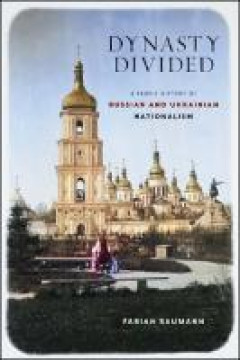
E-book Dynasty Divided: A Family History of Russian and Ukrainian Nationalism
Dynasty Divided uses the story of a prominent Kievan family of journalists, scholars, and politicians to analyze the emergence of rivaling nationalisms in nineteenth-century Ukraine, the most pivotal borderland of the Russian Empire. The Shul'gins identified as Russians and defended the tsarist autocracy; the Shul'hyns identified as Ukrainians and supported peasant-oriented socialism. Fabian Ba…
- Edisi
- -
- ISBN/ISSN
- 9781501770951
- Deskripsi Fisik
- 348 halaman
- Judul Seri
- -
- No. Panggil
- 947 BAU d

E-book Making Uzbekistan: Nation, Empire, and Revolution in the Early USSR
In Making Uzbekistan, Adeeb Khalid chronicles the tumultuous history of Central Asia in the age of the Russian revolution. He explores the complex interaction between Uzbek intellectuals, local Bolsheviks, and Moscow to sketch out the flux of the situation in early-Soviet Central Asia. His focus on the Uzbek intelligentsia allows him to recast our understanding of Soviet nationalities policies.…
- Edisi
- -
- ISBN/ISSN
- 9781501701344
- Deskripsi Fisik
- -
- Judul Seri
- -
- No. Panggil
- 958.7 KHA m
E-book Upland Geopolitics : Postwar Laos and the Global Land Rush
A large large, hand-painted map greets visitors to the rubber-tree nursery just outside Vieng Phoukha, a rural district capital in northwest-ern Laos. Taking up much of the second-story wall of the nursery’s main building, its title is long and formal: “Land-use map of the 3,000-hectare rubber planting promotion project, Vieng Phoukha District, of Bolisat Ltd., Yunnan Province, People’s…
- Edisi
- -
- ISBN/ISSN
- 9780295750507
- Deskripsi Fisik
- 252 hlm
- Judul Seri
- -
- No. Panggil
- 939.2 DWY u
E-book Blood, Land and Power : The Rise and Fall of the Spanish Nobility and …
Western and eastern values of society underscore the family as a fundamental social structure and institution.1 The family reveals the most significant sociocultural features of European communi-ties in a given context, and these become central communication channels back to the family. This idea asserts James Casey’s axiom that family and society are part of a single unit.2The family is at t…
- Edisi
- -
- ISBN/ISSN
- 9781786837110
- Deskripsi Fisik
- 364 hlm
- Judul Seri
- -
- No. Panggil
- 946 PER b
E-book Bearing Witness : Ruth Harrison and British Farm Animal Welfare (1920�…
Both concerns and proposed solutions changed considerably in the course of Ruth Harrison’s life. While the influence of her vegetarian par-ents and Quaker beliefs loomed large over Harrison’s own campaigning, the decades after 1945 saw many older forms of civic activism and think-ing about animals’ place in society change. Economically and intellectu-ally, pre-war welfare arrange…
- Edisi
- -
- ISBN/ISSN
- 9783030627928
- Deskripsi Fisik
- 290 hlm
- Judul Seri
- -
- No. Panggil
- 902 KIR b
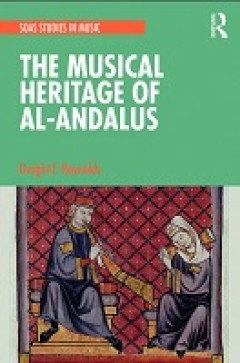
E-book The Musical Heritage of Al-Andalus
The Musical Heritage of Al-Andalus is a critical account of the history of Andalusian music in Iberia from the Islamic conquest of 711 to the final expulsion of the Moriscos (Spanish Muslims converted to Christianity) in the early 17th century. This volume presents the documentation that has come down to us, accompanied by critical and detailed analyses of the sources written in Arabic, Old Cat…
- Edisi
- -
- ISBN/ISSN
- 9781000289527
- Deskripsi Fisik
- 272 halaman
- Judul Seri
- -
- No. Panggil
- 780.72 REY t
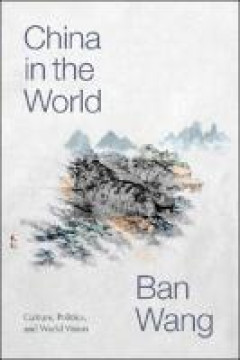
E-book China in the World: Culture, Politics, and World Vision
Ban Wang traces the shifting concept of the Chinese state from the late nineteenth century to the present, showing how the Confucian notion of tianxia—“all under heaven”—influences China’s dedication to contributing to and exchanging with a common world.
- Edisi
- -
- ISBN/ISSN
- 9781478092452
- Deskripsi Fisik
- 228 halaman
- Judul Seri
- -
- No. Panggil
- 951 WAN c
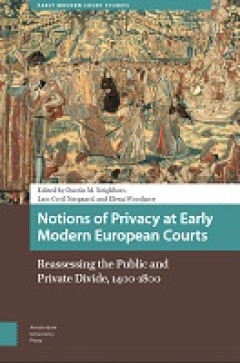
E-book Notions of Privacy at Early Modern European Courts: Reassessing the Pu…
Grand, extravagant, magnificent, scandalous, corrupt, political, personal, fractious; these are terms often associated with the medieval and early modern courts. Moreover, the court constituted a forceful nexus in the social world, which was central to the legitimacy and authority of rulership. As such, courts shaped European politics and culture: architecture, art, fashion, patronage, and cult…
- Edisi
- -
- ISBN/ISSN
- 9789463720076
- Deskripsi Fisik
- 306 halaman
- Judul Seri
- -
- No. Panggil
- 940.2 NEI n
E-book Building the Countryside : Rural Architecture and Settlement in the Tr…
he region of Tripolitania is well-known for its spec-tacular Roman-period architecture in both city and country. The enormous and elaborate temples, baths, basilicae and other public buildings of the coastal cit-ies of Lepcis Magna, Sabratha and others, have, not undeservedly, captured the attention and imagina-tion of travellers and scholars alik…
- Edisi
- -
- ISBN/ISSN
- 9781900971782
- Deskripsi Fisik
- 433 hlm
- Judul Seri
- -
- No. Panggil
- 930 SHE b
E-book Roman Women’s Dress : Literary Sources, Terminology, and Historical …
No man ever steps in the same river twice.”¹Heraclitus’ riddling remark about identityalso applies to Roman (dress) culture. Fortunately, the puzzling contradiction dependson words and not on objects. If we define the term ‘Roman dress culture’ in the broadestsense, it includes all the garments which Roman people (if we also allow for a broaddefinition of the term ‘Roman’) wore fro…
- Edisi
- -
- ISBN/ISSN
- 9783110711554
- Deskripsi Fisik
- 807 hlm
- Judul Seri
- -
- No. Panggil
- 930 RAD r
E-book All About History: Book of British Royals
The date is 14 October 1066, and the battlefield at Hastings lies bloodied, littered with the remains of Harold II's ruined army, with Harold himself defeated by an arrow to the eye. William the Qongueror has just earned his now-famous title, and more importantly, the crown of England. This is where our story begind - the fascinating tale of Britain's monarchy. In this book you will discover in…
- Edisi
- -
- ISBN/ISSN
- 9781910439906
- Deskripsi Fisik
- 180 halaman, ilus.
- Judul Seri
- -
- No. Panggil
- 941 ASA a
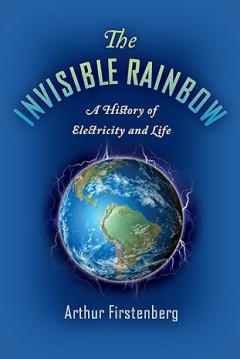
E-Book The Invisible Rainbow: A History of Electricity and Life
Over the last 220 years, society has evolved a universal belief that electricity is ‘safe’ for humanity and the planet. Scientist and journalist Arthur Firstenberg disrupts this conviction by telling the story of electricity in a way it has never been told before?from an environmental point of view?by detailing the effects that this fundamental societal building block has had on our health …
- Edisi
- -
- ISBN/ISSN
- 9781645020097
- Deskripsi Fisik
- 398 halaman
- Judul Seri
- -
- No. Panggil
- 609 FIR t
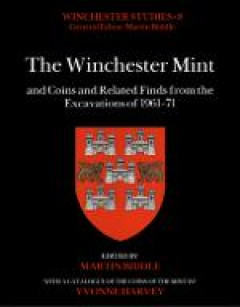
E-Book The Winchester Mint and Coins and Related Finds from the Excavations o…
Edited by Martin Biddle with a catalogue of the known coins of the mint by Yvonne Harvey, this volume records and illustrates the minting of silver pennies in Winchester between the reigns of Alfred the Great and Henry III, a period of three and a half centuries. At the Mint, which was situated in the area of the High Street to the east of where the city’s cross now stands, at least 24 millio…
- Edisi
- -
- ISBN/ISSN
- 9781803270128
- Deskripsi Fisik
- 768 halaman, ilus.
- Judul Seri
- -
- No. Panggil
- 737.49 BID t
E-book A History of Modern Indonesia since c.1200
The spread of Islam is one of the most significant processes of Indonesian history, but also one of the most obscure. Muslim traders had apparently been present in some parts of Indonesia for several centuries before Islam became established within the local communities. When, why and how the conversion of Indonesians began has been debated by several scholars, but no definite conclusions have…
- Edisi
- 3rd ed.
- ISBN/ISSN
- 0333800990
- Deskripsi Fisik
- 515 hlm
- Judul Seri
- -
- No. Panggil
- 959.801 RIC a
E-book A History of the World from the 20th to the 21st Century
During the first half of the twentieth century Europe suffered a cataclysmic change. The lives of millions were destroyed, millions more lives blighted. What led to such a chain of catastrophes? The fratricidal Great War marks the turning point in the history of Europe. There is no single cause that explains it all, but a multiplicity that need to be untangled. Paradoxically industrial progress…
- Edisi
- -
- ISBN/ISSN
- 0203641760
- Deskripsi Fisik
- 1008 hlm
- Judul Seri
- -
- No. Panggil
- 909.83 GRE a

E-Book Risible: Laughter without Reason and the Reproduction of Sound
Risible explores the forgotten history of laughter, from ancient Greece to the sitcom stages of Hollywood. Delia Casadei approaches laughter not as a phenomenon that can be accounted for by studies of humor and theories of comedy but rather as a technique of the human body, knowable by its repetitive, clipped, and proliferating sound and its enduring links to the capacity for language and repro…
- Edisi
- -
- ISBN/ISSN
- 9780520391338
- Deskripsi Fisik
- 234 halaman
- Judul Seri
- -
- No. Panggil
- 792.2 CAS r

E-Book Remapping Travel Narratives (1000–1700): To the East and Back Again
With a specific focus on travel narratives, this collection looks at how Islamic and eastern cultural threads were weaved, through travel and trading networks, into Western European/Christian visual culture and discourse and, ultimately, into the artistic explosion which has been labeled the “Renaissance.” Scholars from across humanities disciplines examine Islamic, Jewish, Spanish, Italian…
- Edisi
- -
- ISBN/ISSN
- 9781942401599
- Deskripsi Fisik
- 295 halaman, ilus.
- Judul Seri
- -
- No. Panggil
- 936 PIE r
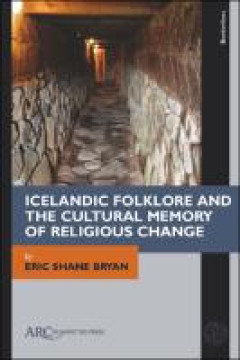
E-Book Icelandic Folklore and the Cultural Memory of Religious Change
This book attempts to understand the origins and development of religious belief in Iceland and greater Scandinavia through the lenses of five carefully selected Icelandic folktales collected in Iceland during the nineteenth century. Each of these five stories has a story of its own: a historical and cultural context, a literary legacy, influences from beliefs of all kinds (orthodox and heterod…
- Edisi
- -
- ISBN/ISSN
- 9781641893756
- Deskripsi Fisik
- 171 halaman, ilus.
- Judul Seri
- -
- No. Panggil
- 270 BRY i
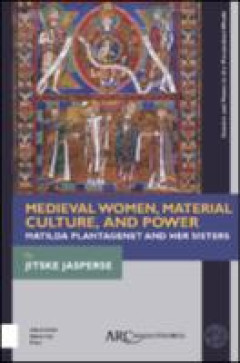
E-Book Medieval Women, Material Culture, and Power: Matilda Plantagenet and h…
This book argues that the impressive range of belongings that can be connected to Duchess Matilda Plantagenet allows us to perceive elite women’s performance of power, even when they are largely absent from the official documentary record.
- Edisi
- -
- ISBN/ISSN
- 9781641891455
- Deskripsi Fisik
- 149 halaman
- Judul Seri
- -
- No. Panggil
- 709.02 JAS m
E-book The Fall of Berlin
A million and a half Jews fought in the armed forces of the Allies during the Second World War. They served in the armies, navies, and air forces of their native lands. Many who were forced to flee the Nazis then joined the war effort in the countries that had given them refuge. Between 490,000 and 520,000 Jewish soldiers fought in the Red Army.1Most of them were nat…
- Edisi
- -
- ISBN/ISSN
- 9781800640795
- Deskripsi Fisik
- 251 hlm
- Judul Seri
- -
- No. Panggil
- 909.82 MAN t
E-book Ancient Greence : From Prehistoric to Hellenistic Times
“Most things in the history of Greece have become a subject of dispute” is how Pausanias, the second-century a.d. author of a famous guide to sites throughout Greece, summed up the challenge and the fascination of thinking about the significance of ancient Greek history (Guide to Greece 4.2.3). The subject was disputed then because Pausanias, a Greek, lived and wrote under the Roman Empire,…
- Edisi
- -
- ISBN/ISSN
- 9780300160055
- Deskripsi Fisik
- 325 hlm
- Judul Seri
- -
- No. Panggil
- 938 MAR a
E-Book Memory of the World: Documentary Heritage in Asia and the Pacific
- Edisi
- -
- ISBN/ISSN
- 9789887723103
- Deskripsi Fisik
- 160 halaman, illus.
- Judul Seri
- -
- No. Panggil
- 950 UNE m
- Edisi
- -
- ISBN/ISSN
- 9789887723103
- Deskripsi Fisik
- 160 halaman, illus.
- Judul Seri
- -
- No. Panggil
- 950 UNE m
E-Book Memory of the World: Documentary Heritage Treasures of Africa
THIS book introduces the documentary heritage inscriptions from Africa on the Memory of the World International Register up to 2023. Its publication was made possible thanks to the collective expertise and efforts of the members of the Africa Regional Committee for Memory of the World (ARCMoW), the custodians of the Memory of the World inscriptions across Africa, the national Memory of the Worl…
- Edisi
- -
- ISBN/ISSN
- 9789231006463
- Deskripsi Fisik
- 86 pages : illustrations
- Judul Seri
- -
- No. Panggil
- 960 UNE m
E-Book New Narratives of Russian and East European Art
This book brings together thirteen scholars to introduce the newest and most cutting-edge research in the field of Russian and East European art history. Reconsidering canonical figures, re-examining prevalent debates, and revisiting aesthetic developments, the book challenges accepted histories and entrenched dichotomies in art and architecture from the nineteenth century to the present. In do…
- Edisi
- -
- ISBN/ISSN
- 9780429642951
- Deskripsi Fisik
- 257 halaman
- Judul Seri
- -
- No. Panggil
- 947 MAR n
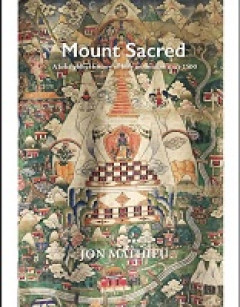
E-Book Mount Sacred: A Brief Global History of Holy Mountains Since 1500
Mount Kailash in Asia, the Black Hills in North America, Uluru in Australia: around the globe there are numerous mountains that have been and continue to be attributed sacredness. Worship of these mountains involves prayer, meditation and pilgrimage. Christianity, which for a long time showed little interest in nature, provides a foil to these practices and was one factor in the tensions that a…
- Edisi
- -
- ISBN/ISSN
- 9781912186716
- Deskripsi Fisik
- 168 halaman
- Judul Seri
- -
- No. Panggil
- 201.6 MAT m
E-book War and Insurgency in the Western Sahara
At a crucial crossroads between Africa and Europe, the Mediterranean and the Atlantic, and the “Arab World” and the West, Morocco has long had a special place in U.S. diplomacy and strategic planning. Since the terrorist attacks of September 11, 2001 (9/11), Morocco’s importance to the United States has only increased; in 2004, President George W. Bush designated the country as a “major…
- Edisi
- -
- ISBN/ISSN
- -
- Deskripsi Fisik
- 106 hlm
- Judul Seri
- -
- No. Panggil
- 962.8 JEN w
E-book Western Sahara
The area lies in North Africa, on the coast of the Atlantic Ocean. It is bordered by Morocco in the north, Algeria in the east (they have 42 kms of common boundary) and Mauritania from the east and south. Its area is 266,000 square kilometres. Just like in most African countries, the borders were marked out by the colonial powers by ratifying different treaties, agreements. The borders of Weste…
- Edisi
- -
- ISBN/ISSN
- 9789638833204
- Deskripsi Fisik
- 198 hlm
- Judul Seri
- -
- No. Panggil
- 962.8 BES w
E-book The Global Cold War : Third World Interventions and the Making of Our …
‘‘We look into history from motives of two kinds,’’ says the Oxford classicist Jasper Griffin. ‘‘There is curiosity about the past, what happened, who did what, and why; and there is the hope to understand the present, how to place and interpret our own times, experiences, and hopes for the future.’’1 As with the history of antiquity, the best contemporary history is usually dri…
- Edisi
- -
- ISBN/ISSN
- 9780521703147
- Deskripsi Fisik
- 498 hlm
- Judul Seri
- -
- No. Panggil
- 909.82 WES t
E-book The Cold War: A Very Short Introduction
Explanations for the onset of the Cold War must begin with World War II. A conflict that ranks, by any conceivable measure, as the most destructive in human history, World War II brought unparalleled levels of death, devastation, privation, and disorder. ‘The conflagration of 1939–1945 was so wrenching, so total, so profound, that a world was overturned,’ notes historian Thomas G. Paterso…
- Edisi
- -
- ISBN/ISSN
- 9780192801784
- Deskripsi Fisik
- 201 hlm
- Judul Seri
- -
- No. Panggil
- 909.82 MAH t
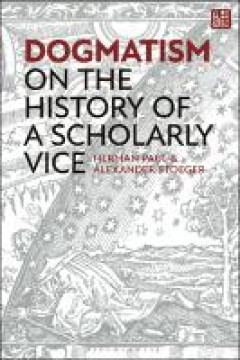
E-Book Dogmatism: On the History of a Scholarly Vice
Why does the history of dogmatism deserve our attention? This open access book analyses uses of the term, following dogmatism from Victorian Britain to Cold War America, examining why it came to be regarded as a vice, and how understandings of its meaning have evolved. Whilst the field of scientific thought is committed to continuous innovation, ideas about dogmatism – with their roots in anc…
- Edisi
- -
- ISBN/ISSN
- 9781350399570
- Deskripsi Fisik
- 115 halaman
- Judul Seri
- -
- No. Panggil
- 901 PAU d
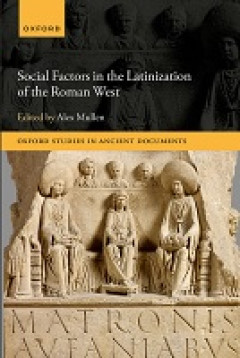
E-Book Social Factors in the Latinization of the Roman West
Latinization is a strangely overlooked topic. Historians have noted it has been ‘taken for granted’ and viewed as an unremarkable by-product of ‘Romanization’, despite its central importance for understanding the Roman provincial world, its life and languages. This volume aims to fill the gap in our scholarship, along with its sister volumes, Latinization, Local Languages and Literacies…
- Edisi
- -
- ISBN/ISSN
- 9780198887294
- Deskripsi Fisik
- 378 halaman
- Judul Seri
- -
- No. Panggil
- 306.44 MUL s
E-book The Invasion of the Dutch East Indies
As a result of World War I, Japan, the United States and Great Britain came to be referred to as the three great powers. The [former German] equatorial Pacific Islands lying between the U.S. territories of the Philippines and Guam and the U.S. mainland became mandated territories of Japan. From way back, Britain had acquired various rights and interests in China with Singapore and Hong Kong ser…
- Edisi
- -
- ISBN/ISSN
- 9789400602298
- Deskripsi Fisik
- 673 hlm
- Judul Seri
- -
- No. Panggil
- 959.802 REM t
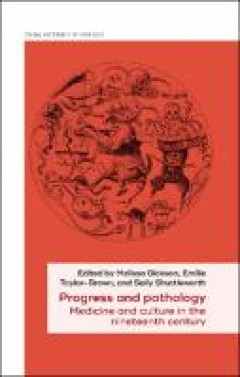
E-Book Progress and Pathology: Medicine and Culture in the Nineteenth Century
This collaborative volume explores changing perceptions of health and disease in the context of the burgeoning global modernities of the long nineteenth century. During this period, popular and medical understandings of the mind and body were challenged, modified, and reframed by the politics and structures of ‘modern life’, understood in industrial, social, commercial, and technological te…
- Edisi
- -
- ISBN/ISSN
- 9781526147547
- Deskripsi Fisik
- 389 halaman
- Judul Seri
- -
- No. Panggil
- 362.1068 DIC p
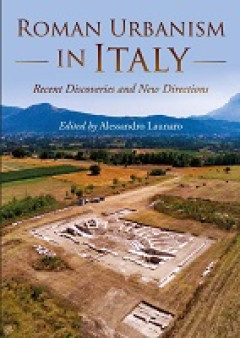
E-Book Roman Urbanism in Italy: Recent Discoveries and New Directions
The study of Roman urbanism – especially its early (Republican) phases – is extensively rooted in the evidence provided by a series of key sites, several of them located in Italy. Some of these Italian towns (e.g. Fregellae, Alba Fucens, Cosa) have received a great deal of scholarly attention in the past and they are routinely referenced as textbook examples, framing much of our understandi…
- Edisi
- -
- ISBN/ISSN
- 9798888570364
- Deskripsi Fisik
- 280 halaman
- Judul Seri
- -
- No. Panggil
- 936 LAU r
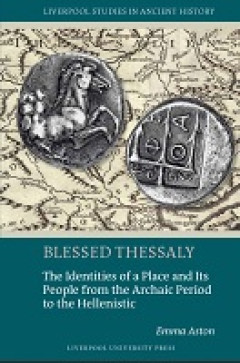
E-Book Blessed Thessaly: The Identities of a Place and Its People from the Ar…
Thessaly was a region of great importance in the ancient Greek world, possessing both agricultural abundance and a strategic position between north and south. It presents historians with the challenge of seeing beyond traditional stereotypes (wealth and witches, horses and hospitality) that have coloured perceptions of its people from antiquity to the present day. It also presents a complex and…
- Edisi
- -
- ISBN/ISSN
- 9781835530016
- Deskripsi Fisik
- 520 halaman
- Judul Seri
- -
- No. Panggil
- 938 AST b
E-book The History of Southern Africa
Archaeological findings have indicated that Southern Africa is the land from which humankind’s ancestors evolved, between 3 million and 1 million years ago. Indeed, it is probable that the indigenous San, Pygmy, and Khoekhoe peoples of Southern Africa are linked genetically to that earlier, ancient population. Little, if anything, is known about interaction among these particular early group…
- Edisi
- -
- ISBN/ISSN
- 9781615303984
- Deskripsi Fisik
- 240 hlm
- Judul Seri
- -
- No. Panggil
- 968 MCK t
E-book A History of South Africa
Modern Western culture is inordinately present-minded. Politicians are ignorant of the past. School curricula foreshorten the historical record by focusing on recent events. People lack a sense of their location in time and fail to perceive that contemporary society is constrained by its cultural as well as its biological inheritance. Many historians of the white South African establishment sta…
- Edisi
- 3rd ed.
- ISBN/ISSN
- 0300087764
- Deskripsi Fisik
- 418 hlm
- Judul Seri
- -
- No. Panggil
- 968 THO a
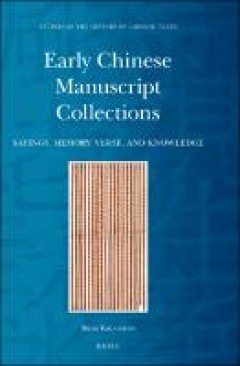
E-Book Early Chinese Manuscript Collections: Sayings, Memory, Verse, and Know…
As the first study of manuscript collections, this book asks what changes when sayings, stories, songs, and spells are brought together on the same carrier. Covering a plethora of manuscripts from the Warring States and early empires, and spanning sources from philosophy, historiography, poetry, and technical literature, this study describes the whole life-cycle of multiple texts collected on a…
- Edisi
- -
- ISBN/ISSN
- 9789004540842
- Deskripsi Fisik
- 232 halaman
- Judul Seri
- -
- No. Panggil
- 091 KRI e
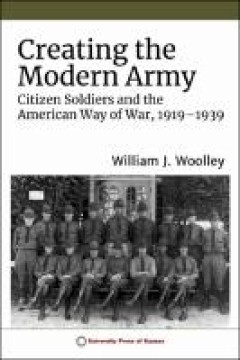
E-Book Creating the Modern Army: Citizen-Soldiers and the American Way of War…
The modern US Army as we know it was largely created in the years between the two world wars. Prior to World War I, officers in leadership positions were increasingly convinced that building a new army could not take place as a series of random developments but was an enterprise that had to be guided by a distinct military policy that enjoyed the support of the nation. In 1920, Congress accepte…
- Edisi
- -
- ISBN/ISSN
- 9780700633029
- Deskripsi Fisik
- 384 halaman
- Judul Seri
- -
- No. Panggil
- 940.4 WOO c
 Karya Umum
Karya Umum  Filsafat
Filsafat  Agama
Agama  Ilmu-ilmu Sosial
Ilmu-ilmu Sosial  Bahasa
Bahasa  Ilmu-ilmu Murni
Ilmu-ilmu Murni  Ilmu-ilmu Terapan
Ilmu-ilmu Terapan  Kesenian, Hiburan, dan Olahraga
Kesenian, Hiburan, dan Olahraga  Kesusastraan
Kesusastraan  Geografi dan Sejarah
Geografi dan Sejarah